
Sébastien Le Prestre, seigneur de Vauban, later styling himself as the marquis de Vauban, commonly referred to as Vauban, was a French military engineer and Marshal of France who worked under Louis XIV. He is generally considered the greatest engineer of his time, and one of the most important in European military history.
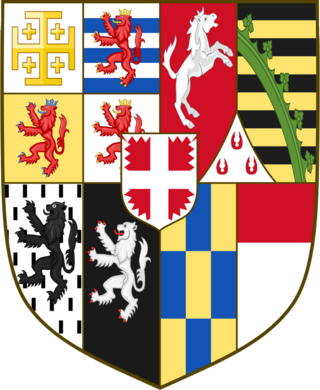
The House of Savoy-Carignano originated as a cadet branch of the House of Savoy. It was founded by Thomas Francis, Prince of Carignano (1596–1656), an Italian military commander who was the fifth son of Charles Emmanuel I, Duke of Savoy. His descendants were accepted as princes étrangers at the court of France, where some held prominent positions. Upon the extinction of the main Savoy line they eventually came to reign as kings of Sardinia from 1831 to 1861, and as kings of Italy from 1861 until the dynasty's deposition in 1946. The Savoy-Carignano family also, briefly, supplied a king each to Spain and Croatia, as well as queens consort to Bulgaria and Portugal.
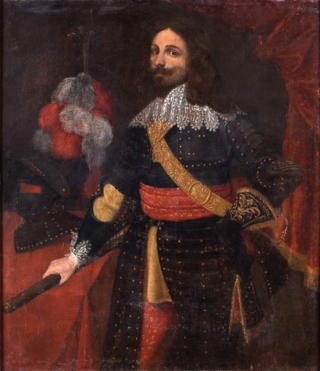
Thomas Francis of Savoy, 1st Prince of Carignano was an Italian military commander and the founder of the Carignano branch of the House of Savoy, which reigned as kings of Piedmont-Sardinia from 1831 to 1861, and as kings of Italy from 1861 until the dynasty's deposition in 1946.

Armand Jean du Plessis, 1st Duke of Richelieu, known as Cardinal Richelieu, was a French statesman and prelate of the Catholic Church. He became known as l'Éminence Rouge, or "the Red Eminence", a term derived from the title "Eminence" applied to cardinals and from the red robes that they customarily wear.

Cardinal-Infante Ferdinand was a Spanish and Portuguese prince, Governor of the Spanish Netherlands, Cardinal of the Holy Catholic Church, Archduke of Austria, Archbishop of Toledo (1619–41), and a general during the Thirty Years' War, the Eighty Years' War, and the Franco-Spanish War. He is commonly considered the last great commander and strategist of the Spanish Empire, whose premature death in a critical moment helped bring about the end of Spanish hegemony in Europe. He is, as well, one of few generals undefeated on the battlefield.
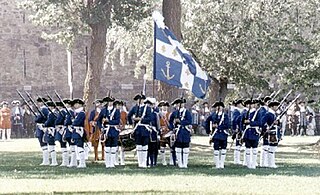
The Troupes de la Marine was a French military formation founded by Cardinal Richelieu in 1622 under the denomination of Compagnie ordinaire de la mer, were originally intended to form the garrisons of the ships of the King. It was in 1674 that Jean-Baptiste Colbert decided to make permanent colonial troops and give them the name of Compagnies Franches de la Marine.

The Battle of Kallo was a major field battle fought from 20 to 21 June 1638 in and around the forts of Kallo and Verrebroek, located on the left bank of the Scheldt river, near Antwerp, during the second phase of the Eighty Years' War. Following the symbolic recovery of Breda during the 1637 campaign, the Dutch Republic agreed with the French Crown, with whom it had allied in 1635, to besiege a major city in the Spanish Netherlands during the 1638 campaign. The commander of the Dutch States Army, Frederick Henry of Orange, planned an approach over Antwerp from the two sides of the Scheldt. After marching the army, Frederick Henry transferred 50 barges to Count William of Nassau-Siegen and he was left entrusted to land in the Spanish-controlled Waasland region, west of Antwerp, to seize the forts of Kallo and Verrebroek, along with several other key fortifications, to invest Antwerp from the west. In the meantime, Frederick Henry would advance on the opposite bank to complete the blockade of the city while the armies of France invaded the Spanish Netherlands from the south to oblige the Spanish Army of Flanders to divide its forces.
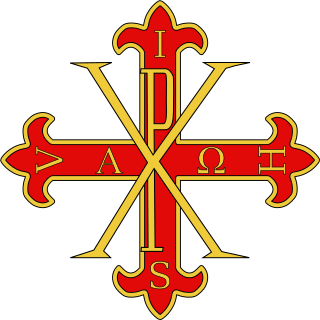
The Sacred Military Constantinian Order of Saint George, also historically referred to as the Imperial Constantinian Order of Saint George and the Order of the Constantinian Angelic Knights of Saint George, is a dynastic order of knighthood of the House of Bourbon-Two Sicilies. Currently, the grand magistry of the order is disputed among the two claimants to the headship of the formerly reigning House of Bourbon-Two Sicilies as heirs of the House of Farnese, namely Prince Pedro and Prince Carlo. The order was one of the rare orders confirmed as a religious-military order in the papal bull Militantis Ecclesiae in 1718, owing to a notable success in liberating Christians in the Peloponnese. Together with the Sovereign Military Order of Malta, it is one of a small number of Catholic orders that still have this status today. It is not an order of chivalry under the patronage of the Holy See, but its membership is restricted to practising Catholics.
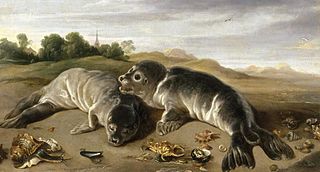
Paul de Vos was a Flemish Baroque painter who specialized in mainly in compositions of animals, hunting scenes and still lifes. He worked for an elite clientele and was a regular collaborator of leading Antwerp painters such as Anthony van Dyck and Peter Paul Rubens.

Aubert le Mire, Latinized Aubertus Miraeus was an ecclesiastical historian in the Spanish Netherlands.

The siege of Schenkenschans was a major siege of the Eighty Years' War. In a successful campaign the Army of Flanders, commanded by Spanish general Cardinal-Infante Ferdinand of Austria, captured Schenkenschans along with a number of important towns, reversing recent Dutch gains and opening the Dutch Republic to a possible invasion. The Dutch Stadtholder, Fredrick Henry, pushed the republic's military efforts to their limit to recapture the fortress of Schenkenschans to counter the threat to the exposed Dutch heartland. He succeeded in doing so after a costly nine month siege.
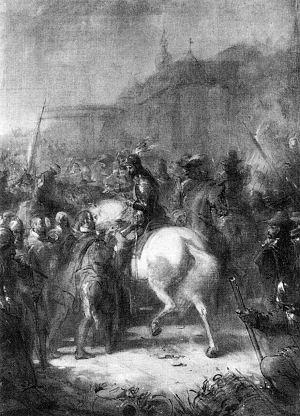
The fourth siege of Breda was an important siege in the Eighty Years' War in which stadtholder Frederick Henry, Prince of Orange retook the city of Breda, which had last changed hands in 1625 when the Spanish general Ambrogio Spinola conquered it for the Spanish Habsburgs. Hereafter, the city would remain in the hands of the Dutch Republic until the end of the war.

The siege of Leuven was an important siege in the Thirty Years' War in which a Franco-Dutch army under Frederick Henry of Orange and the French Marshals Urbain de Maillé-Brezé and Gaspard III de Coligny, who had invaded the Spanish Netherlands from two sides, laid siege to the city of Leuven, defended by a force of 4,000 comprising local citizen and student militias with Walloons, Germans, Spanish and Irish of the Army of Flanders under Anthonie Schetz, Baron of Grobbendonck. Poor organization and logistics and the spread of sickness among the French, along with the appearance of an Imperial-Spanish relief army of 11,000 under Cardinal-Infante Ferdinand and Ottavio Piccolomini, forced the invading army to lift the siege. This failure allowed the Spanish forces to take the initiative and soon the invaders were forced into a headlong retreat.
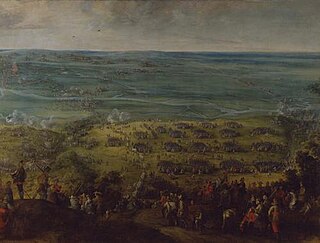
The Crossing of the Somme took place on 5 August 1636 during the Thirty Years' War and the Franco-Spanish War when units of the Spanish Army of Flanders and the Imperial Army under Thomas Francis, Prince of Carignano, lieutenant of the Cardinal-Infante Ferdinand of Austria, crossed the Somme river near Bray-sur-Somme during its offensive in French territory. Despite the fierce resistance of the French army led by Louis de Bourbon, Count of Soissons, the allied troops successfully crossed the river and drove off the French troops along the Oise river, proceeding over the following weeks to invest the important fortress of Corbie, located two leagues upriver of Amiens, which caused a spread of panic among the population of Paris.
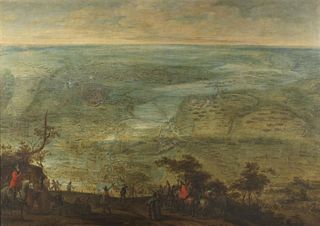
The siege of Saint-Omer was a siege in the Thirty Years' War in which a French army under Gaspard III de Coligny, Maréchal de Châtillon, laid siege to the Flemish city of Saint-Omer, defended by a small garrison in command of Lancelot II Schetz, count of Grobbendonck. Despite several initial successes in the capture of the minor forts around Saint-Omer, on the night of 8/9 June a Spanish relief army under Thomas Francis, Prince of Carignano, surprised Châtillon's troops and established a small fort in the middle of the French lines. An entire army corps under Maréchal de La Force was ordered to move towards Saint-Omer to support Châtillon siege, but on 12 July a further Imperial-Spanish force commanded by Ottavio Piccolomini entered Saint-Omer, resolving the French marshals to withdraw.

The siege of Venlo was an important siege in the Eighty Years' War that lasted from 20 to 25 August 1637. The Cardinal-Infante Ferdinand of Austria, Governor of the Spanish Netherlands, retook the city of Venlo from the United Provinces, which had taken control of it in 1632 during the offensive of Frederick Henry, Prince of Orange against Maastricht. The capture of Venlo and Roermond, which was surrendered to the Cardinal-Infante a week later, effectively cut Maastricht from the Dutch Republic, thus preventing further attacks on the Spanish Netherlands from the east. In the southern front Ferdinand lost the towns of La Capelle, Landrecies, and Damvillers to the French, but then he forced them to retreat south of Maubeuge.

The siege of Algeciras was the first of many sieges of the city by Christian forces in the lengthy period of the Spanish Reconquista. The siege, ordered by King Alfonso X of Castile also known as "el Sabio", was a fruitless military campaign initiated by the Kingdom of Castile with the objective of removing the Benimerins from Algeciras. The siege on Algeciras, then known to the Muslims as Al-Jazira Al-Khadra, was strategically important because Algeciras had been at the time the main fortress and landing place for African reinforcement troops in the Iberian Peninsula. Castile, which had a powerful armada of ships anchored in the Bay of Gibraltar to blockade such reinforcement, had a few days previously to the siege, seen that fleet obliterated by the Muslim admiral, Abu Yusuf Yaqub at the Naval Battle of Algeciras.

The Siege of La Capelle took place from the 2nd to the 8th of July in 1636 during the Franco-Spanish War (1635–1659) in which a Spanish army under Cardinal-Infante Ferdinand managed to seize the fortress of La Capelle from the French army retreating from a previous defeat taking place at Leuven.

The First Siege of Corbie took place from the 7th to the 15th of August, 1636 during the Thirty Years' War and the Franco-Spanish War (1635–59) where a Spanish army under the Cardinal-Infante Ferdinand and his lieutenant Prince of Carignano successfully capture the important French fortress of Corbie. The siege would only last a little over a week with the fortress eventually surrendering after 8 days on the 15th of August. This important siege battle is part of the Crossing of the Somme campaign and caused a chain of events to happen after the siege with the French royal family fleeing Paris in fear of the Spanish tercios and the Cardinal-Infante's advance, which was thought to have been aimed towards the French capital.
The Capture of Schenkenschans was a battle during the Eighty Years' War which saw a small detachment from the army under Cardinal-Infante Ferdinand capture the key fortress of Schenkenschans. The event leading up to the capture would be the Siege of Leuven in which the French and Dutch armies suffered a major defeat against the Spanish Army of Flanders. This would lead to a total collapse of the French and Dutch campaign in the Spanish Netherlands and result in a total counter-offensive led by Cardinal-Infante Ferdinand which resulted in large successes not only in taking back the territory lost but as well as in the offensive campaigns within France and the Dutch Republic.


















